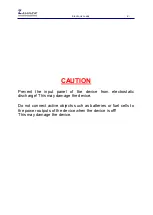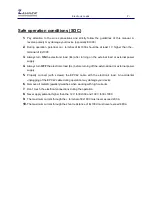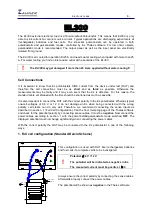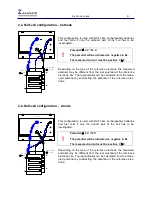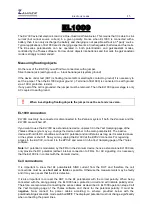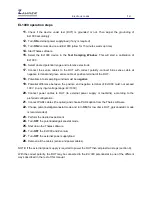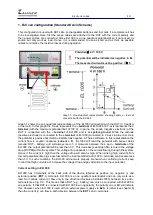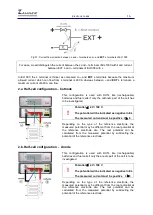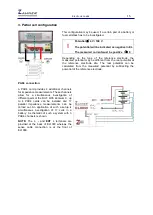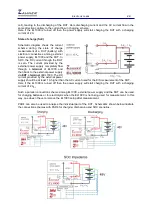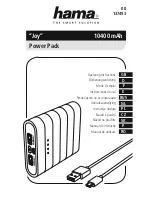
Electronic Loads
-
11-
EL1000
The
EL1000
external electronic load is a
One-Quadrant-Potentiostat
. This means that it is able to sink
current (but cannot source current) in a given polarity. Hence when EL1000 is connected with a
battery then it can only discharge the battery and charging is not possible without a 3
rd
party source.
Typical applications of EL1000 are discharging experiments at (rechargeable) batteries and fuel cells.
The
EL
-series potentiostats can be operated in both potentiostatic and galvanostatic modes,
controlled by the Thales software. For low ohmic objects like batteries and fuel cells the galvanostatic
mode is strongly recommended.
Measuring floating objects
On the rear of the
EL1000
you will find two connectors with a jumper.
Silver banana jack (earth ground)
⇔
black banana jack (system ground)
If the device under test (DUT) is floating (no metallic or electrolytic contact to ground) it is necessary to
set the jumper. Then the EL1000 signal ground (- Terminal of EL1000) is connected to earth ground
via a 100
Ω
protective resistor.
If any part of the cell is grounded, the jumper must be removed. Then the EL1000 power stage is only
AC coupled to earth ground.
!
When investigating floating objects the jumper must be set and vice versa.
EL1000 connection
EL1000
must only be connected or disconnected to the Zennium system if both, the
Zennium
and the
EL1000
are switched off.
If you want to use the
EL1000
as a stand-alone device, unselect it in the
Test Sampling
page of the
Thales
software (you may e.g. change the device number to the main potentiostat). The inactive
device will hold its DC conditions such as DC potential and on/off status as long as it is selected anew
or the system is shut off. Now you may unplug the
EL1000
at the
EPC42
connector. For regaining
access to the
EL1000
, connect it to the
EPC42
and select it in the
Test Sampling
page of the
Thales
software.
Note:
AC potential is modulated by the FRA in the Zennium device; hence a stand-alone EL1000 can
only provide the DC potential (without internal connection to FRA). For AC signalling, it is necessary
that the EL1000 is in contact with the Zennium device.
Cell connections
It is important to know that
EL
potentiostats SINK current from the DUT and therefore the cell
connections must be as
short and
as
thick
as possible. Otherwise the measurements may be faulty
and it may even seem that the
EL
is defective.
It is also important to connect the DUT to the
EL
potentiostat with the correct polarity. When being
connected with the wrong polarity, the EL1000 has a protection circuit and will indicate polarity error.
Therefore, we recommend connecting the sense cables as described in EL1000 operation steps. Call
the
Test Sampling
page of the Thales software and check for the potential polarity. It must be
negative
. Now connect the power cables according to scheme provided below with the
potentiostatic/galvanostatic mode switched
OFF
. The displayed potential must not change significantly
when connecting the power lines.



